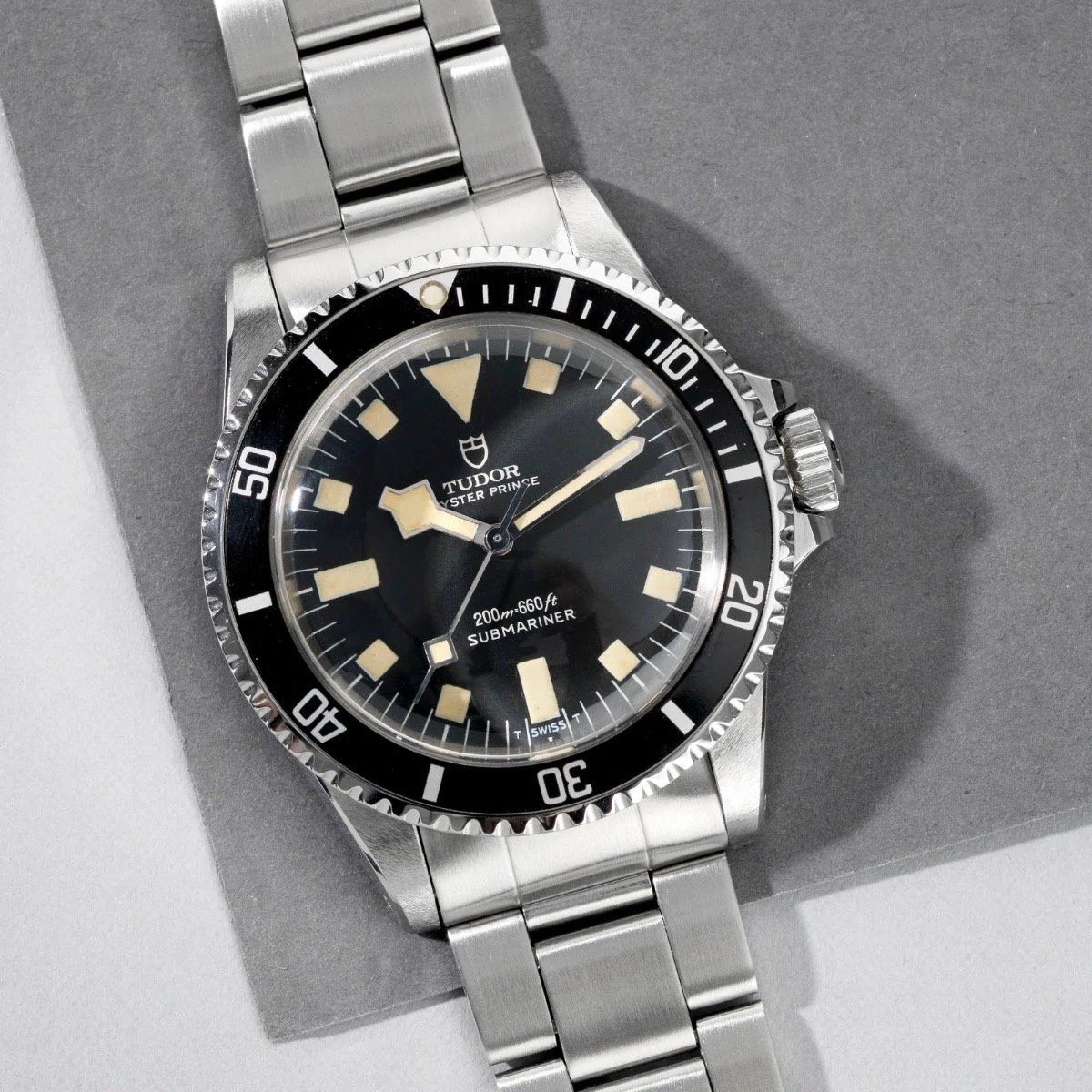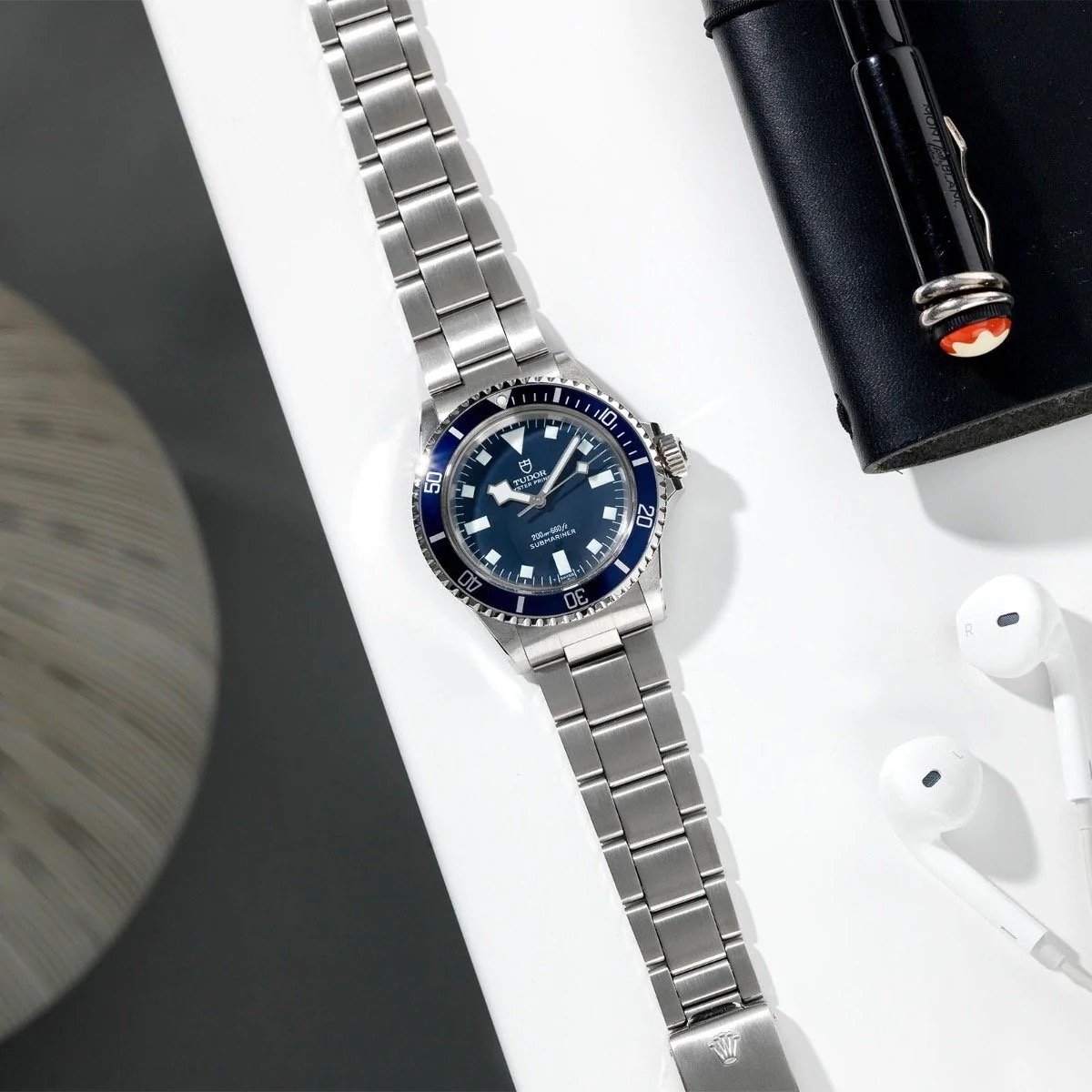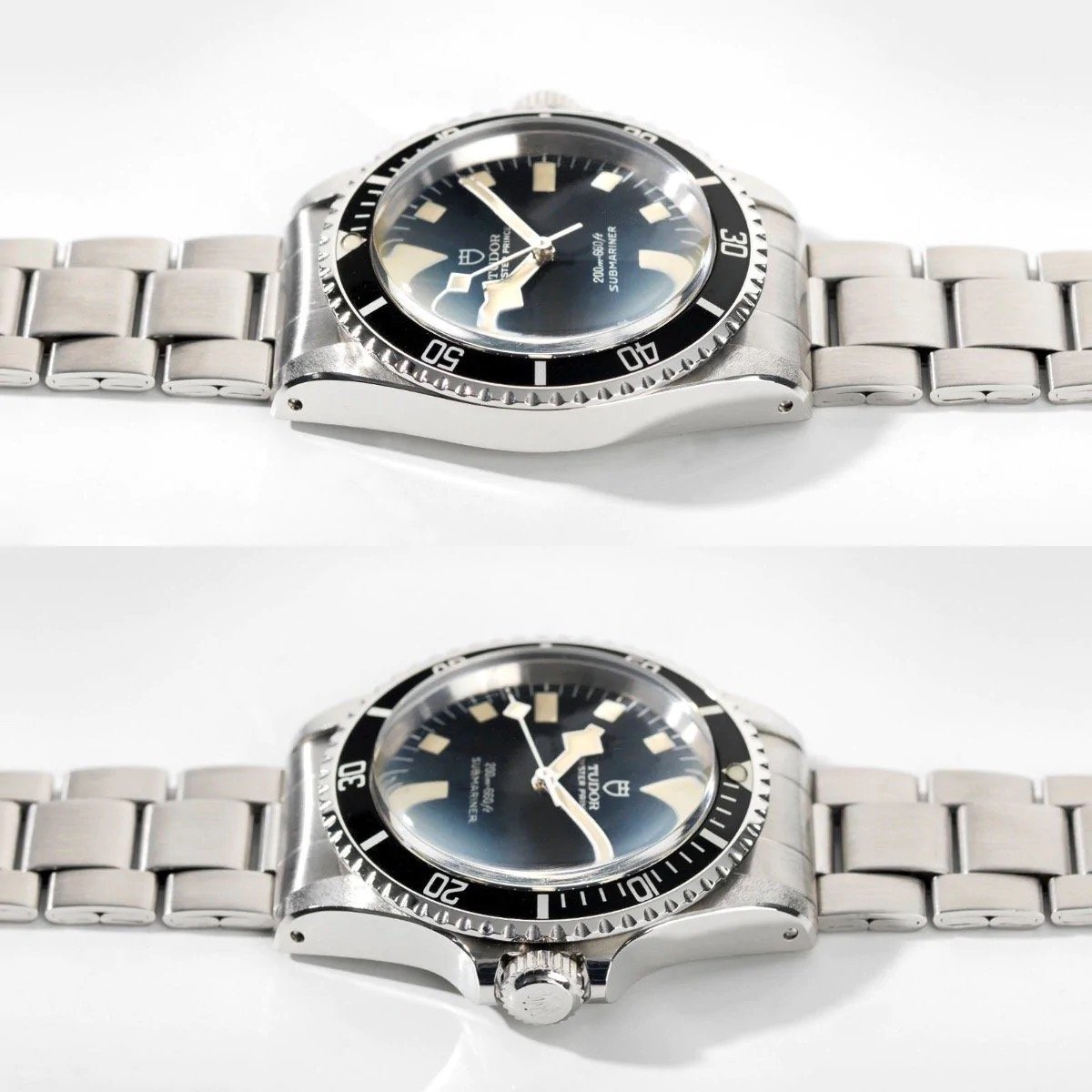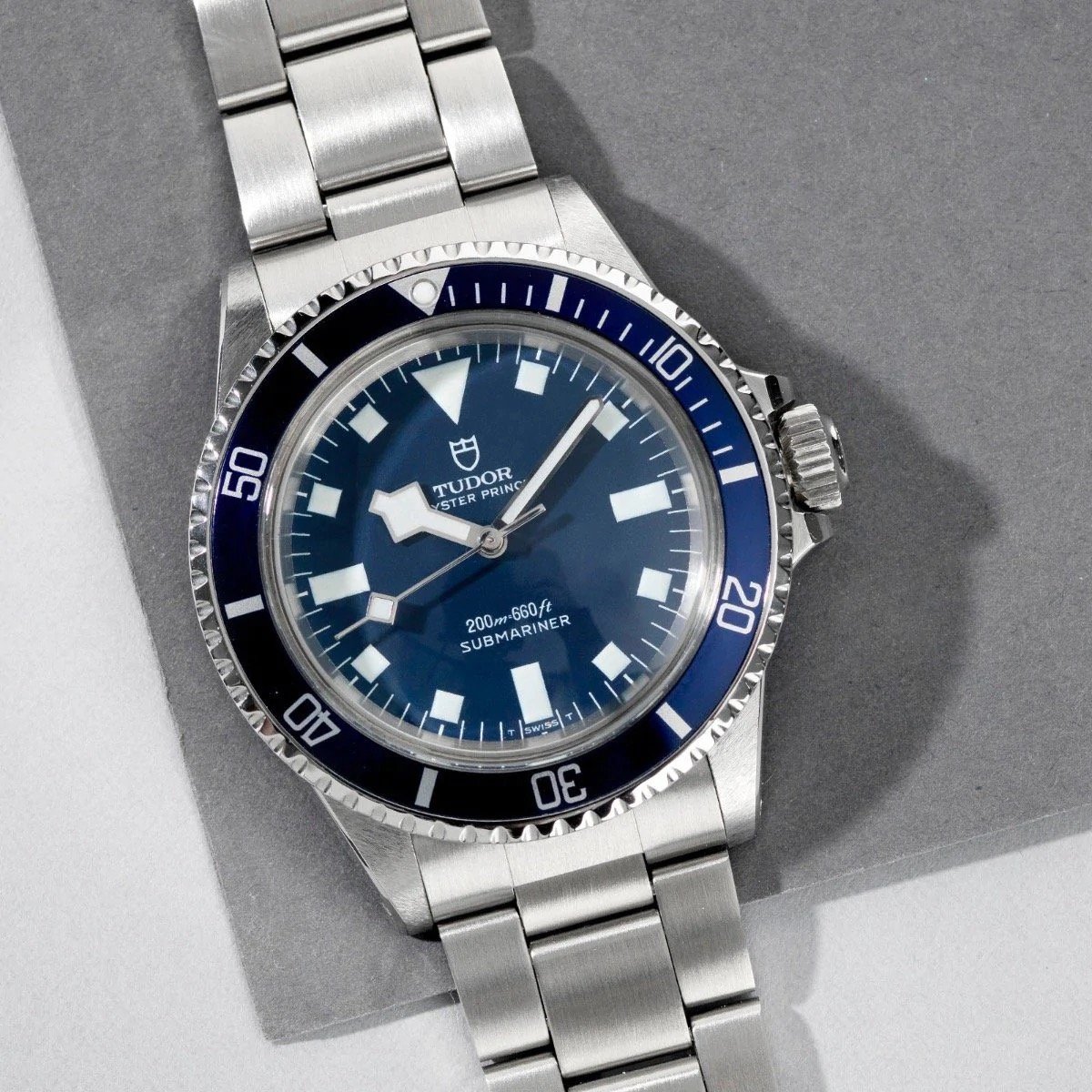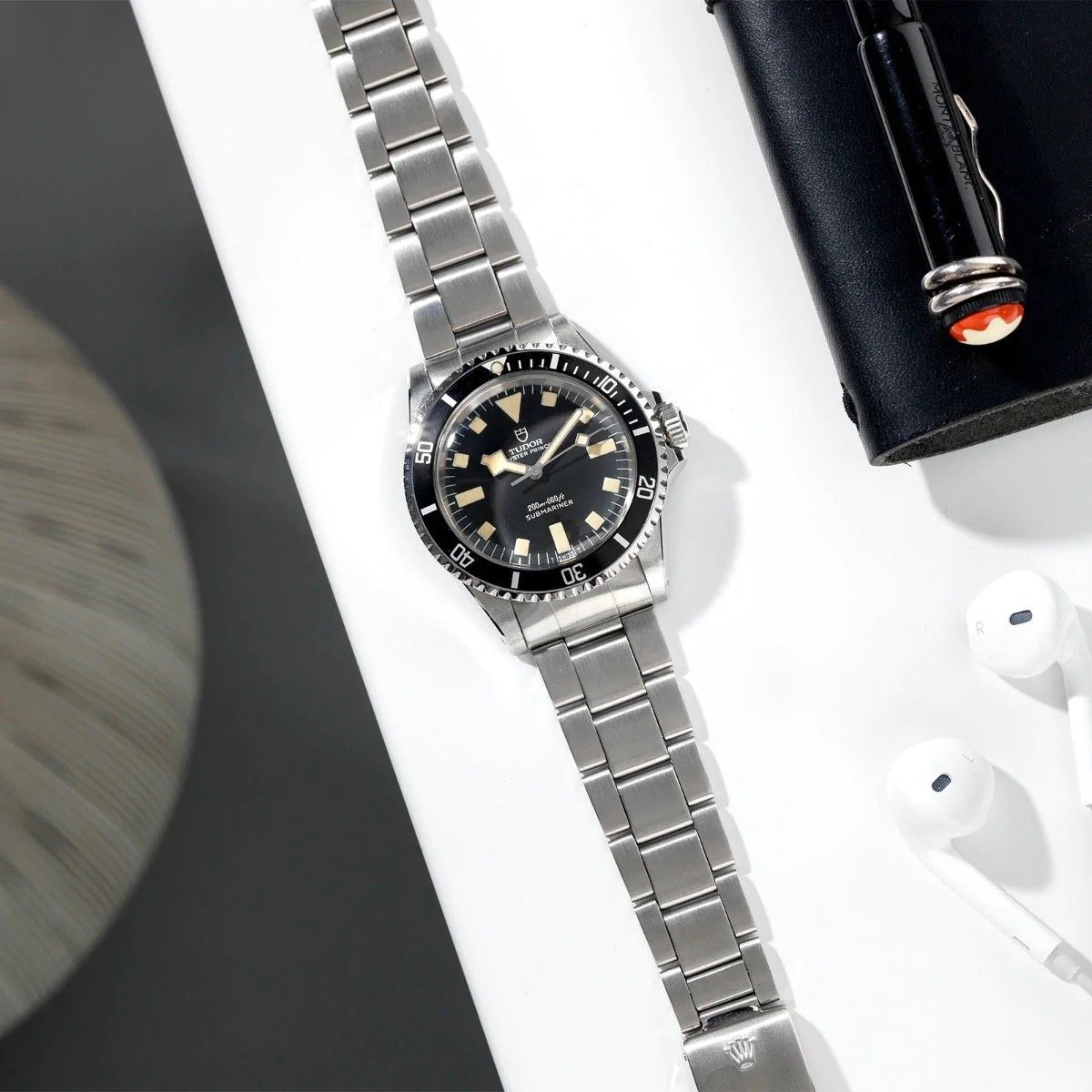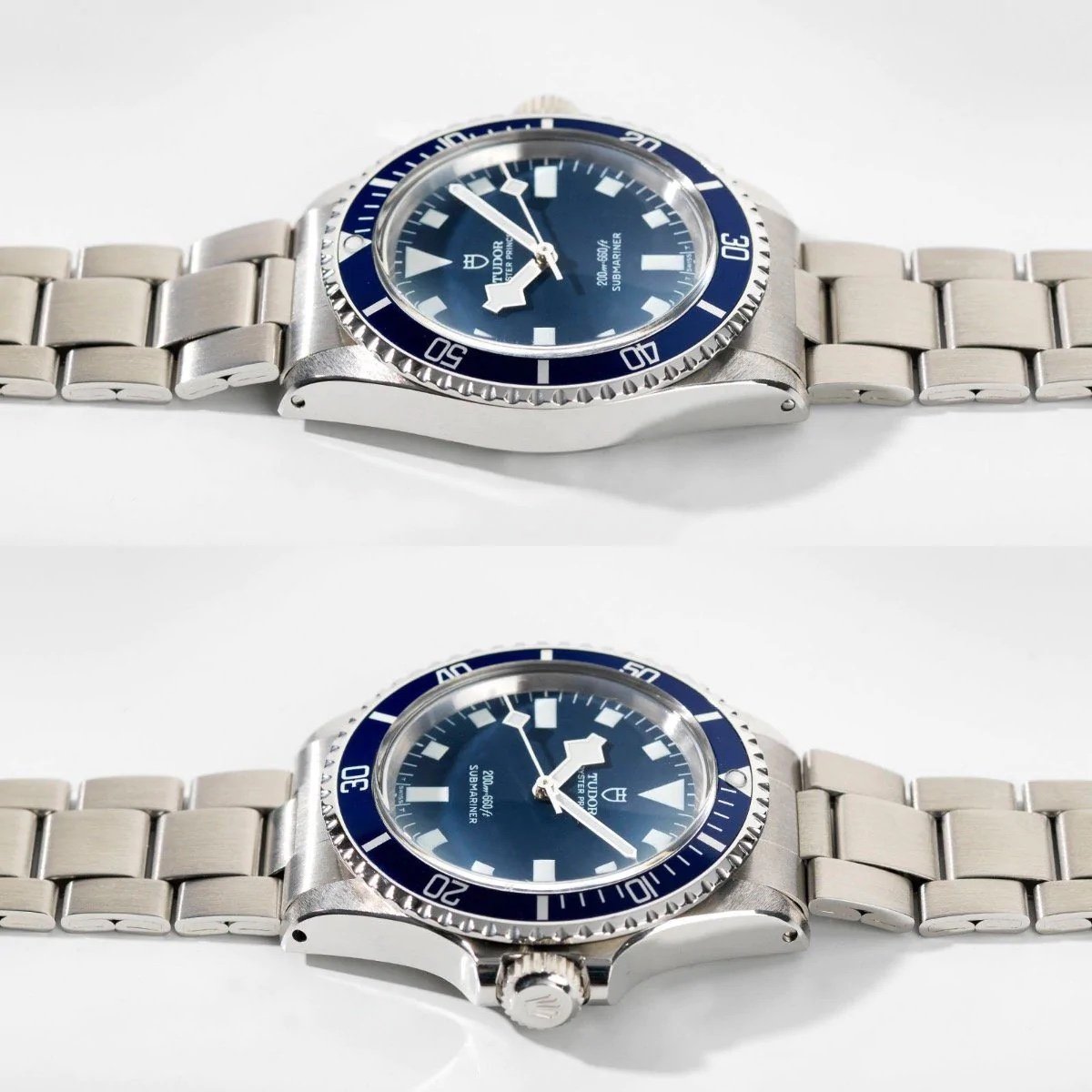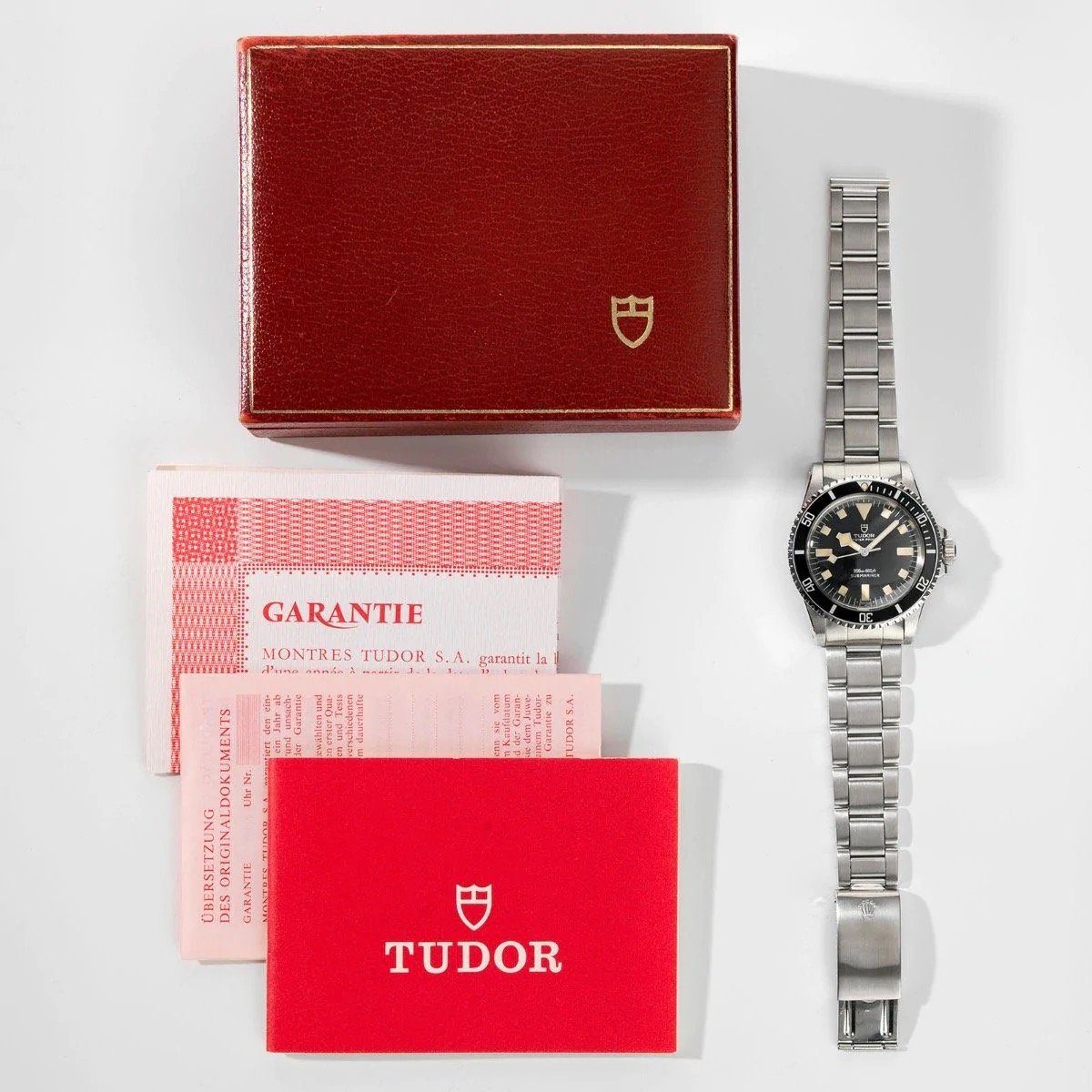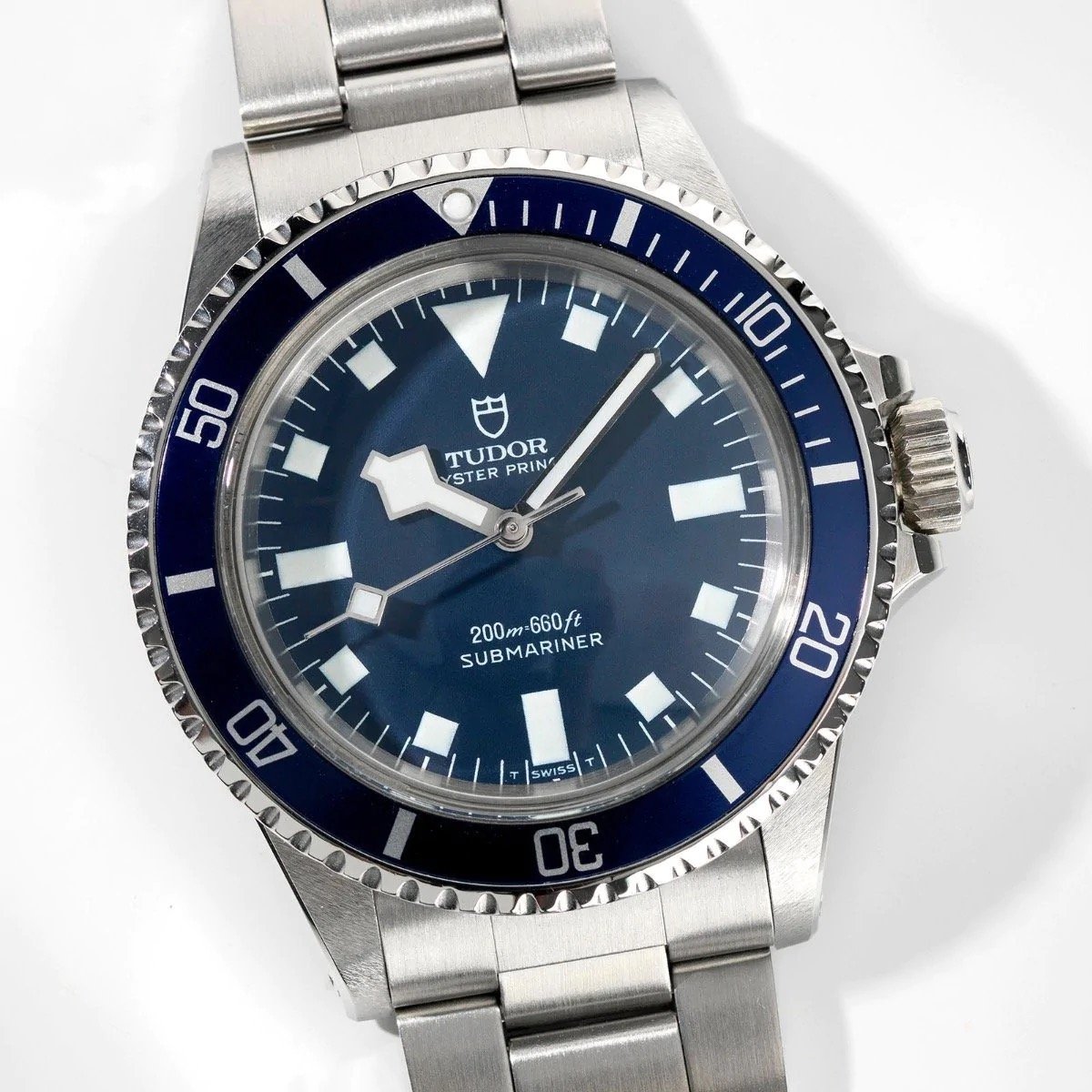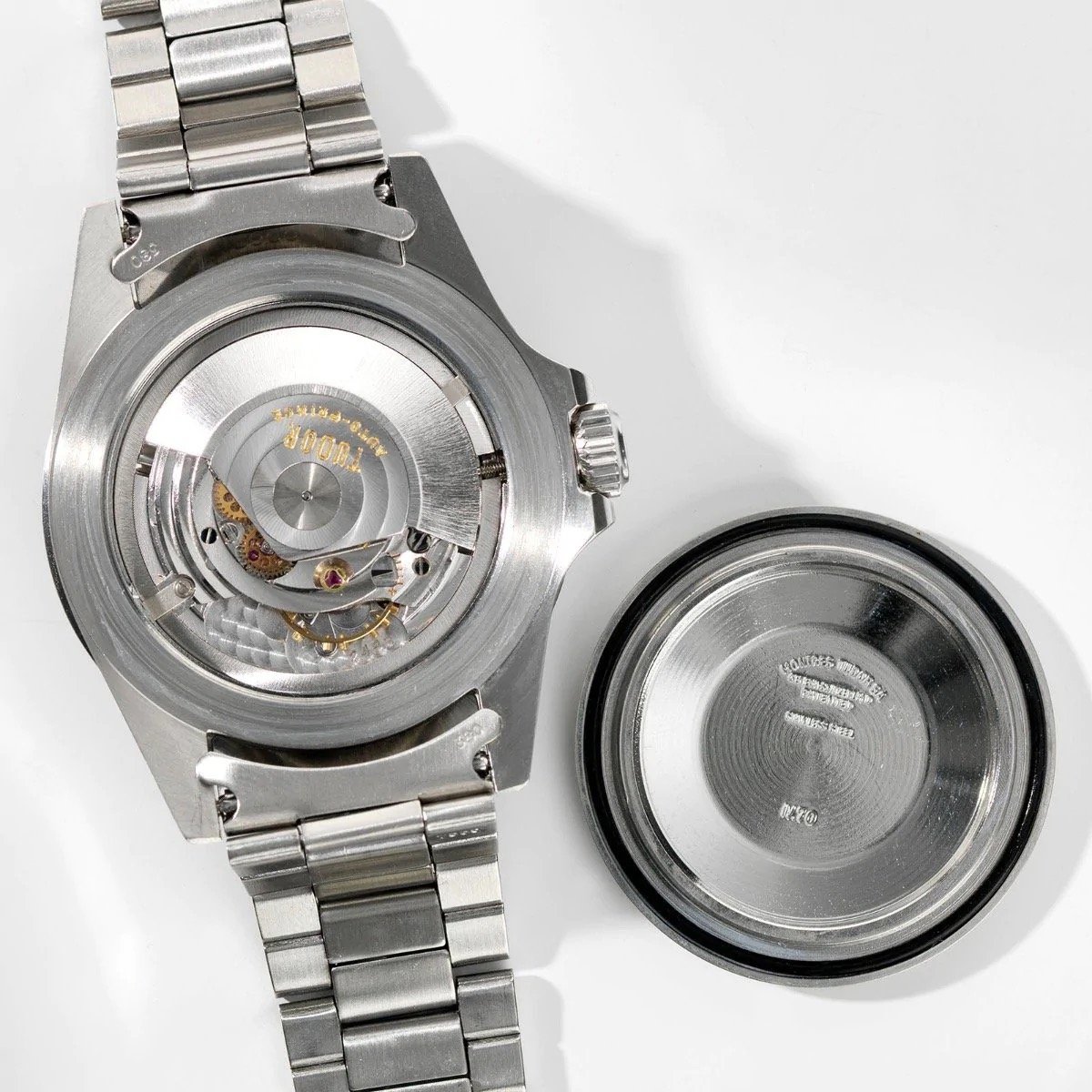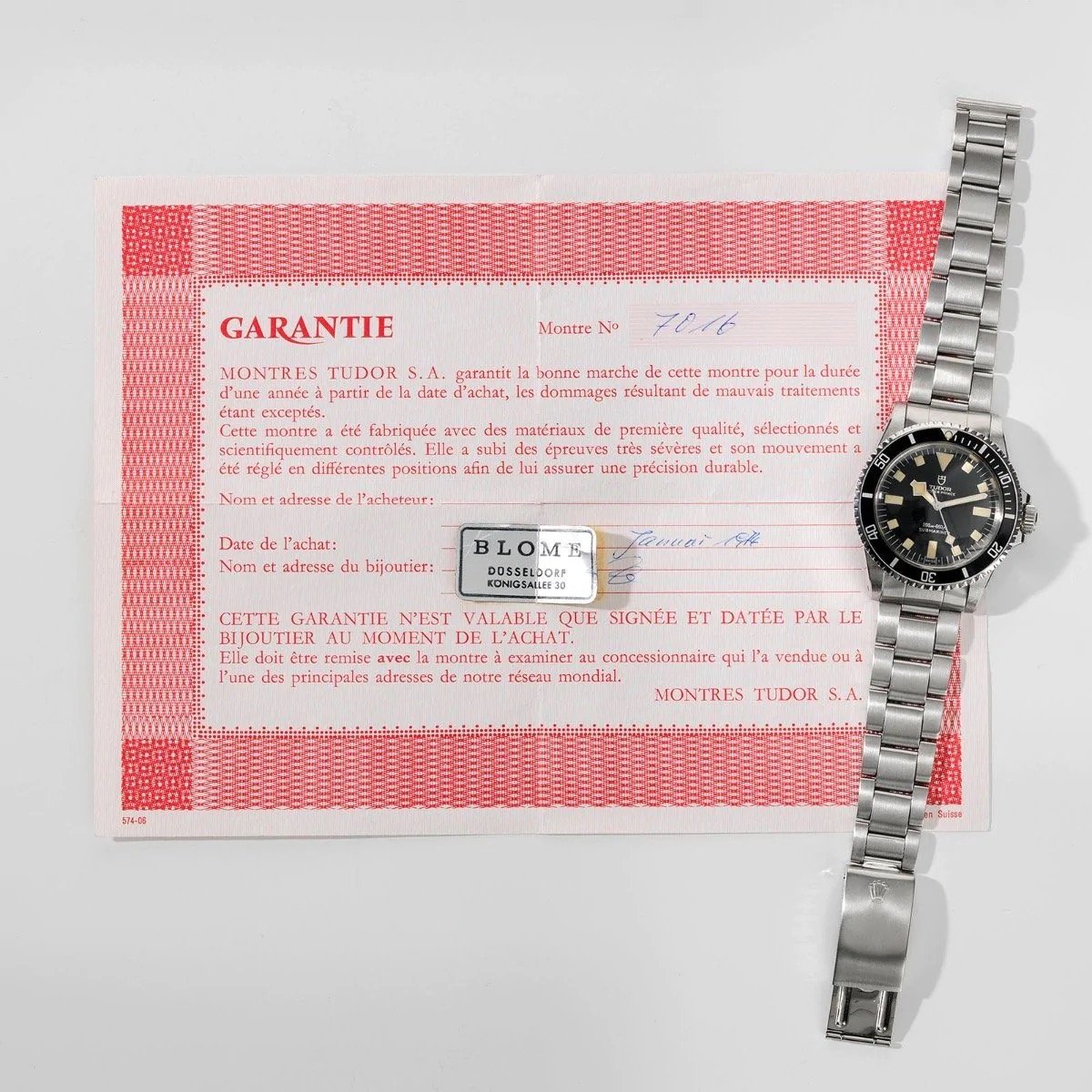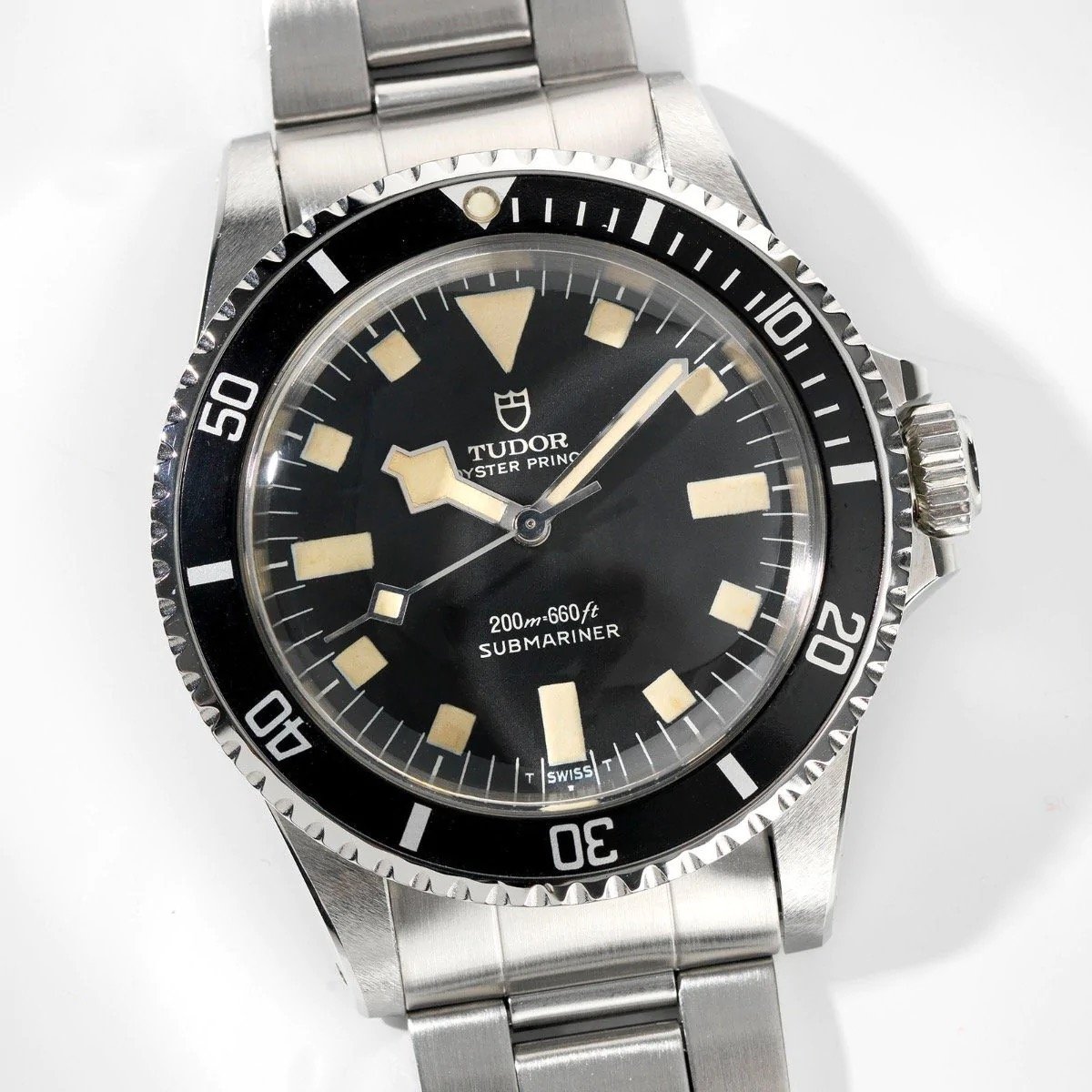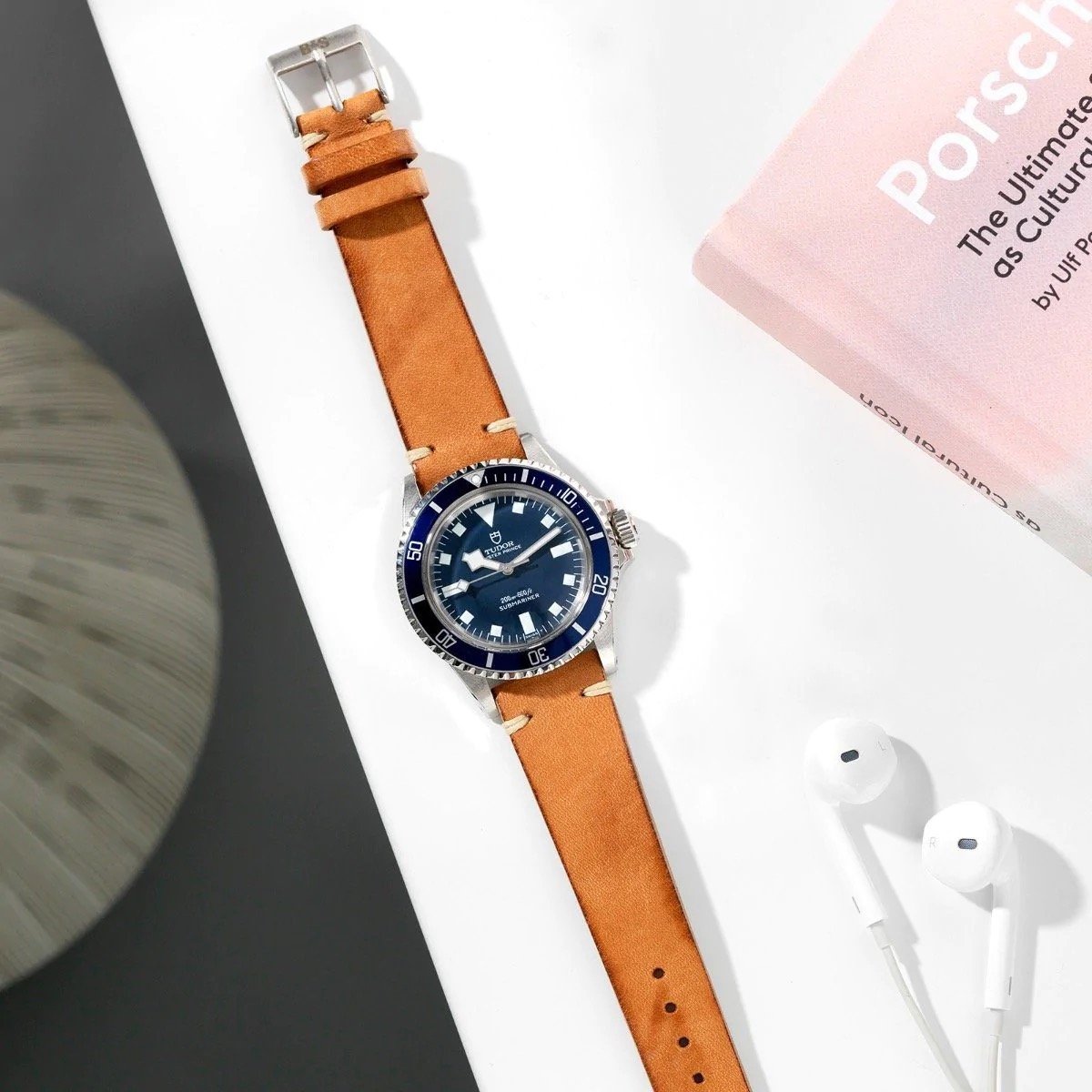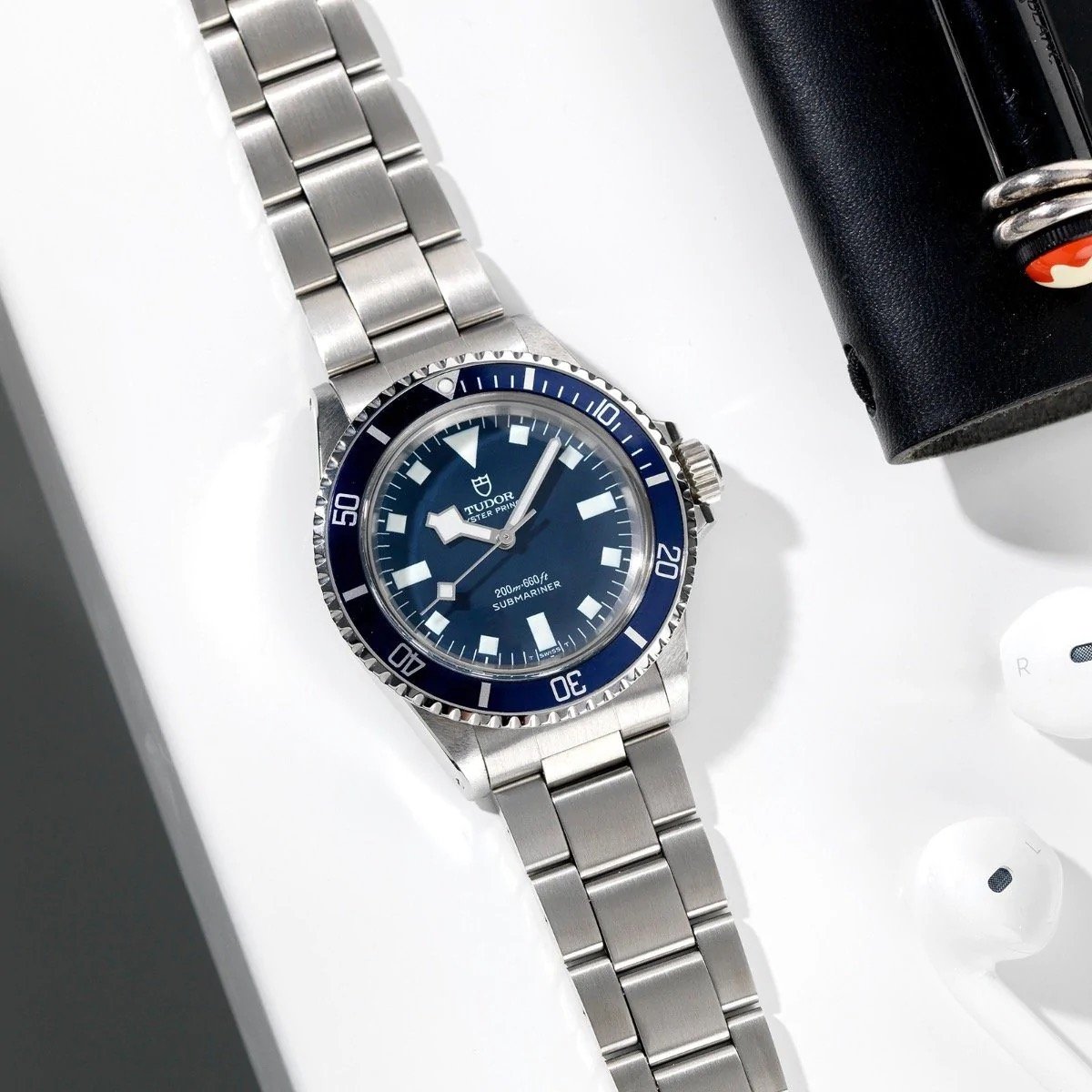Dear Tudor, Bring Back The Oyster Prince Submariner “Snowflake” Ref. 7016
There is no denying that Tudor is one of the brands of the moment. As most of you will know, there is a design split between the classically inspired Black Bay line and the Pelagos models. The combination of snowflake hands and square hour markers, as seen on the modern Pelagos divers, is often considered the true Tudor design. The vintage-inspired Black Bay better captures the charm of the past models from Tudor and Rolex. But what if the brand chose a combination of both? It wouldn’t take more than a look in Tudor’s archives to find the perfect template, the Oyster Prince Submariner “Snowflake” ref. 7016.
The appreciation of vintage Tudor pieces is an interesting phenomenon. It’s partly driven by the great success of the Tudor brand over the past decade. Undoubtedly, the introduction of the Black Bay has been a stroke of brilliance for the brand. Additionally, the appreciation for big brother Rolex has obviously also played a huge part in the rise in popularity of Tudor’s timepieces from the past. As a result, prices for vintage Tudor models have risen significantly. One of these models, the Tudor Submariner ref. 7016 could be the perfect inspiration for a missing link in the current Tudor collection.
The rise of the Tudor Submariner
In the wide array of different Tudor models from the past, there is always the shadowing presence of Rolex. But whereas that used to have a negative connotation, Tudor’s connection to its bigger brother is an asset that many people have come to appreciate. The Tudor Oyster Prince Submariners in particular have become highly sought-after vintage pieces. It’s why many of the vintage Tudor Subs have prices that greatly exceed the prices of the current Black Bay models. One of these models is the Tudor Submariner ref. 7016. This particular Submariner was introduced in 1969 and was the first Tudor equipped with an ETA movement.
Additionally, it was also the first Submariner from the brand that incorporated the combination of snowflake hands and a dial with square and rectangular hour markers. It is this now-famous combination that many consider the “true Tudor” style. Nowadays, we see the design used for the Pelagos line of modern dive watches. But Tudor doesn’t use the dial design with square and rectangular markers for the Black Bay models, and many people that love and connect to that specific design have asked, “Why not?”
Choosing the right Submariner
While the easiest strategic answer is to create a distinction between the Black Bay and Pelagos lines, creating one or more Black Bay models with that dial design would make sense. I am sure plenty of Tudor fans would love to see such a watch come to life as it would perfectly connect the past with the present. Tudor created multiple generations of its Submariner with that specific dial design. It started with the Submariner ref. 7016 that came without a date. The Submariner ref. 7021 was the same-generation Sub that did feature a date. In 1975, Tudor replaced the references 7016 and 7021 with the references 9401 and 9411, which also featured the recognizable Tudor dial.
I said that this dial/handset combination started with the ref. 7016, but this was actually the first reference with that dial available to the public. The specific dial design resulted from research and development done with the French Marine Nationale. Its divers requested watches with bigger luminescent hands and hour markers for increased readability. Tudor used the new dial designs for the first-generation Submariner ref. 7928 that the divers used on the job. That reference was the predecessor of the ref. 7016. So, technically, the ref. 7928 Submariner for the Marine Nationale was the first Tudor model equipped with that dial.
The Tudor Submariner ref. 7016
Let’s focus on some details of the Submariner ref. 7016. You might ask why I’m focusing on the dateless version and not the ref. 7021. Well, it’s purely a personal preference that I like any Rolex or Tudor Submariner better without a date. Anyway, as I said, the ref. 7016 was introduced in 1969 and produced until 1975, so it was in production for only six short years. The watch featured a 39mm Submariner case that was signed by Rolex and was water-resistant to 200 meters. In contrast to its predecessor, which featured a domed Plexiglass crystal, the newer reference utilized a flat, thicker crystal.
However, the first version of the ref. 7016 did not feature the snowflake hands and square and rectangular hour markers. Additionally, when the new dial and hand design came along, the shape of the case changed slightly. Tudor collectors make a distinction between the later “Snowflake” versions and the ref. 7016 “Mk1” featuring a case with semi-pointed crown guards. The Mk1 also came with a dial with the Tudor rose logo and four lines of text on the bottom half of the dial, just like its predecessor.
The Mk2 introduces the famous dial design
The ref. 7016 “Mk2” marked the introduction of the famous Tudor dial design, and it came with a dial/bezel pairing in either black or blue. Additionally, it also introduced a slightly different case design with rounded crown guards. Tudor collectors can tell you that the early versions of the Submariner “Snowflake” used paint and lacquer for the dials that quickly decayed. Often, the decay was a result of water ingress or poor maintenance. But even without water ingress, the dials would often worsen over time. Early versions of both the black and blue dials can have visible bubbles under the surface and are — unsurprisingly — known as “bubble dials.”
Despite the initial dial issues, the aesthetic of the Submariner case and bezel of that time with the dial design works miracles. The square and rectangular markers match the thick notches on the edge of the bezel very well, creating an overall style that looks tough and emphasizes the tool-watch character of the Submariner. Over time, the tritium lume used for the hands and markers aged nicely to a darker color that gives the watches a very nice vintage look.
The first Tudor with an ETA movement
Inside the case, Tudor used the caliber 2483. Tudor designated the caliber as 2461-2483, with the first part referring to the base ETA movement and the second as the Tudor reference. The 25-jewel automatic movement operates at 18,000vph and provides 42 hours of power reserve. The movement replaces the caliber 390 that powered the previous Tudor Submariner ref. 7928.
The switch to an ETA movement for the Submariner started Tudor’s long relationship with ETA as its main movement supplier. The connection lasted until 2016 with the Black Bay ref. 79230N. So for almost five decades, Tudor watches came equipped with ETA movements. Whereas Tudor’s use of off-the-shelf ETA movements was an issue for watch fans in the past, it doesn’t seem to be an issue in current times. There is even speculation online that the ETA-powered Black Bay models might be future classics. While that seems a bit far-fetched, an ETA-powered Tudor Submariner is no longer considered a less interesting or inferior product compared to its Rolex counterpart. It has fans that are more than happy with what the watches offer in terms of history and charm.
A modern version of the Tudor Submariner ref. 7016
And that’s also where I want to connect the past and the present. I’d love to see a modern, vintage-inspired version of the Tudor Submariner “Snowflake”. Hypothetically speaking, such a reissue would be part of the Black Bay line, as that is Tudor’s line of watches that takes inspiration from the past. Looking at the current Black Bay line, the Black Bay Fifty-Eight and 41mm Black Bay models connect mostly to the aesthetic of the early Rolex Submariners. They have a refinement that links to the early Submariner and Submariner “Big Crown” references from the 1950s.
But what I would like to see from Tudor is a Black Bay model inspired by the Submariner ref. 7016 and that, visually, has more in common with the case of the Rolex Submariner ref. 5512 and 5513. As I mentioned before, the design of these models looks tougher and more like a proper tool watch. The main aspect that emphasizes this is the edge of the bezel, which almost looks rougher and cooler. It’s a look I adore, and it would be great to see it return to the Tudor collection. Especially since the vintage ref. 7016 goes for roughly €8K – €15K, which is serious money and far more than any current stainless steel Tudor.
Final thoughts on a new Tudor Submariner “Snowflake”
You could argue that the recently introduced Pelagos 39 is the manifestation of my wish. And to that, I say “not quite.” First of all, I would love the new Submariner “Snowflake” to be stainless steel instead of titanium. Additionally, the bezel edge of the Pelagos 39 has the same fine notches as the bezels of the Black Bay models. I would love to see the look of the vintage Tudor Submariners make a return, and currently, it’s missing from the brand’s lineup.
And I know you agree with me on the subject of bringing back the Tudor Submariner. In a previous Tudor Submariner article, Mike asked our readers if the Submariner should return to the brand’s collection. More than 80% of people that voted agreed that the Tudor Submariner should make a comeback. I will take it one step further and would love it to be the Submariner “Snowflake” because it so perfectly connects the past and the present. Additionally, it just looks very cool with a combination of the typical Tudor dial and hands with the case and bezel of the vintage Submariner “Snowflake” ref. 7016.
Visit the official Tudor website for more information on the current Tudor collection.
All images, including the cover image, are courtesy of Bulang & Sons.

